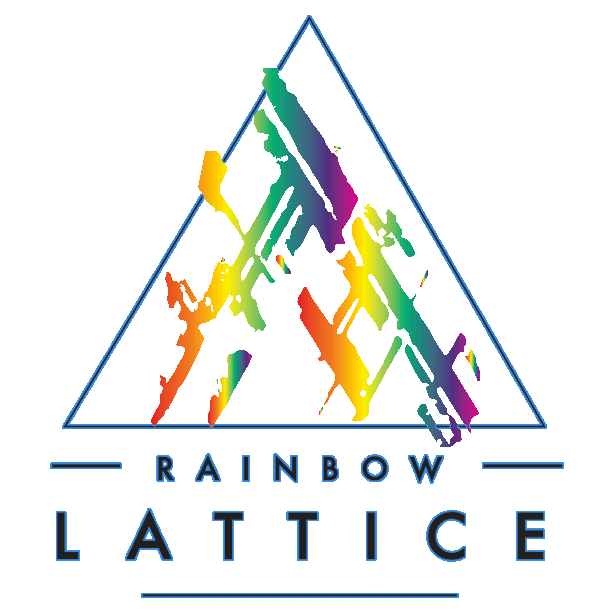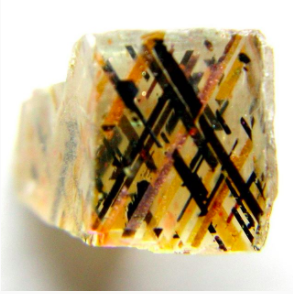THE STONE
Rainbow Lattice is a very rare and unusual stone. It is a type of feldspar which is predominantly Moonstone that is made up of 75% orthoclase and 25% albite.
The inclusions (internal features) are referred to as: the result of crystalographically oriented exsolution crystals within the feldspar mass.
Whilst the initial testing of the stones inclusions conducted in 1989 (see [1]) concluded that the inclusions were made up of ilmenite (for the black blades and triangles) and hematite (for the orange platelets).
With the advancement in technology over the last 3 decades, a recently conducted more in depth analysis has found the black blades and triangle inclusions in Rainbow Lattice to be magnetite.
A paper with these results will be published soon by authors from the the Gemmological Institute, China University of Geosciences (Wuhan) and it will be published in The Journal of Gemmology by Gem-A.
Hematite (Fe2O3) - small, yellow to deep orange platelets which can be hexagonal shape and are generally in one plane within the Feldspar. This effect is called aventurescence, or Sunstone effect, and gives some of the gems their orange glow.
Magnetite (Fe3O4) Iron Oxide which creates the lattice effect. This forms as a very thin blades that occur in one plane at different levels (like pages in a book). These blades orientate (north/south) in different levels by a process known as lamellar twinning and also displays “Sagentic twinning”, which forms the lattice pattern. The magnetite inclusions in many cases have oxidized or altered through geophysical processes to give the iridescence or rainbow effect across the lattice patterning. The magnetite that has no alteration remains black with a metallic sheen. The magnetite also predominantly forms triangles and even the lattice pattern has triangular terminations.
It is a rare occurrence when Sunstone occurs in a Moonstone, let alone with the added presence of the other phenomena seen in this extraordinary gemstone - perfect parallel lines and equilateral triangles which are incredibly rare in nature.
References
Gems & Gemology Vol XXV - Spring 1989 p.47 (https://www.gia.edu/doc/SP89.pdf).





